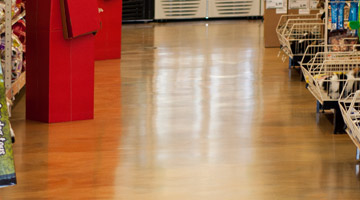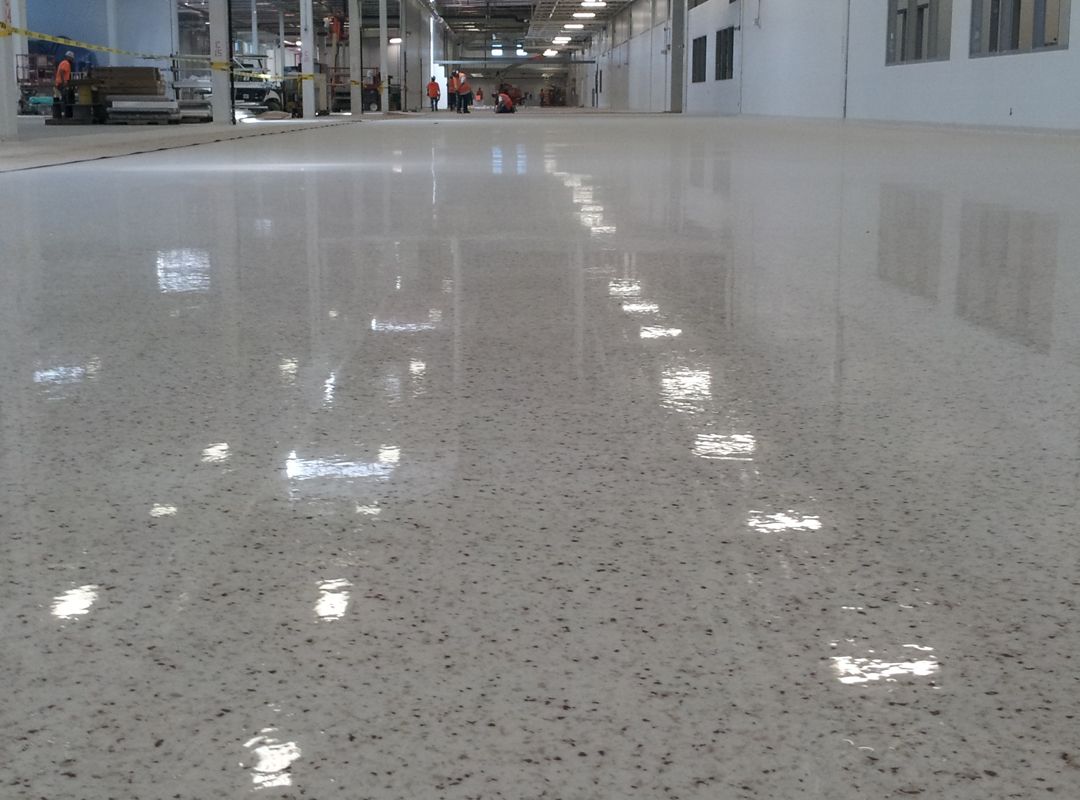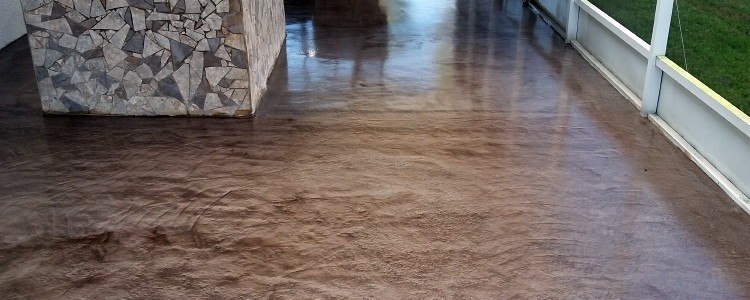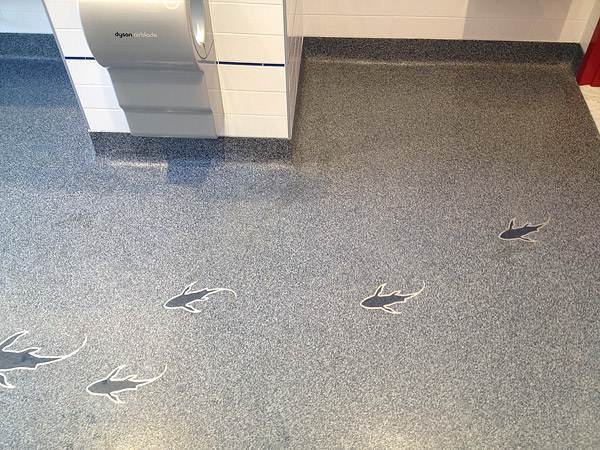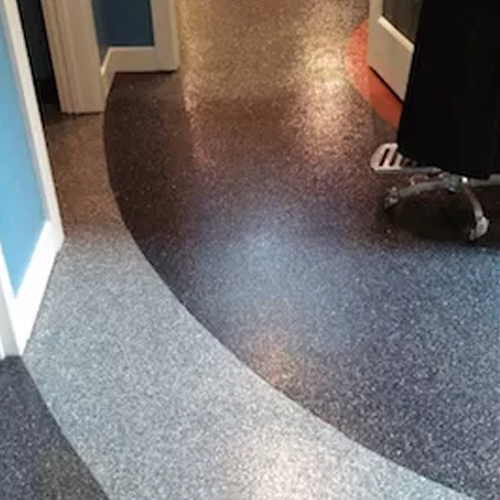What Is Decorative Epoxy Flooring and How Does It Work?
Decorative epoxy flooring is a seamless, durable flooring solution that combines functionality with aesthetics. It is made by applying an epoxy resin coating over concrete or other surfaces, creating a smooth, high-gloss finish that is customizable with various decorative elements like metallic pigments, color flakes, or patterns. This type of flooring is ideal for both residential and commercial spaces due to its combination of beauty and practicality.
- Understanding the Basics of Epoxy Flooring: Epoxy flooring consists of two main components: epoxy resin and a hardener. When mixed, these materials create a chemical reaction that cures into a solid, durable surface. Decorative epoxy flooring builds on this by incorporating elements that enhance its visual appeal, such as embedded designs or vibrant colors.
- A Fusion of Beauty and Functionality: Unlike plain epoxy floors, decorative epoxy flooring emphasizes aesthetics. It can mimic the look of marble, granite, or even 3D effects while retaining the strength and resilience of traditional epoxy. This makes it an excellent choice for spaces where design matters as much as durability.
- How It Works: The application process involves multiple steps, including surface preparation, application of a base coat, embedding decorative elements, and finishing with a protective topcoat. Each layer is critical to achieving a flawless appearance and long-lasting performance.
- The Role of Customization: One of the biggest appeals of decorative epoxy flooring is its versatility. Homeowners and designers can choose from a wide range of patterns, colors, and textures to create a unique look that complements the surrounding decor.
- Key Features of Decorative Epoxy
- Durability: Resistant to wear, chemicals, and impact.
- Seamless Surface: Eliminates grout lines or cracks for easier cleaning.
- High Gloss Finish: Provides a luxurious, polished look.
- Why It’s Worth Considering: Decorative epoxy flooring offers a unique combination of practicality and style. Its ability to transform dull surfaces into visually striking floors makes it a top choice for modern interiors.
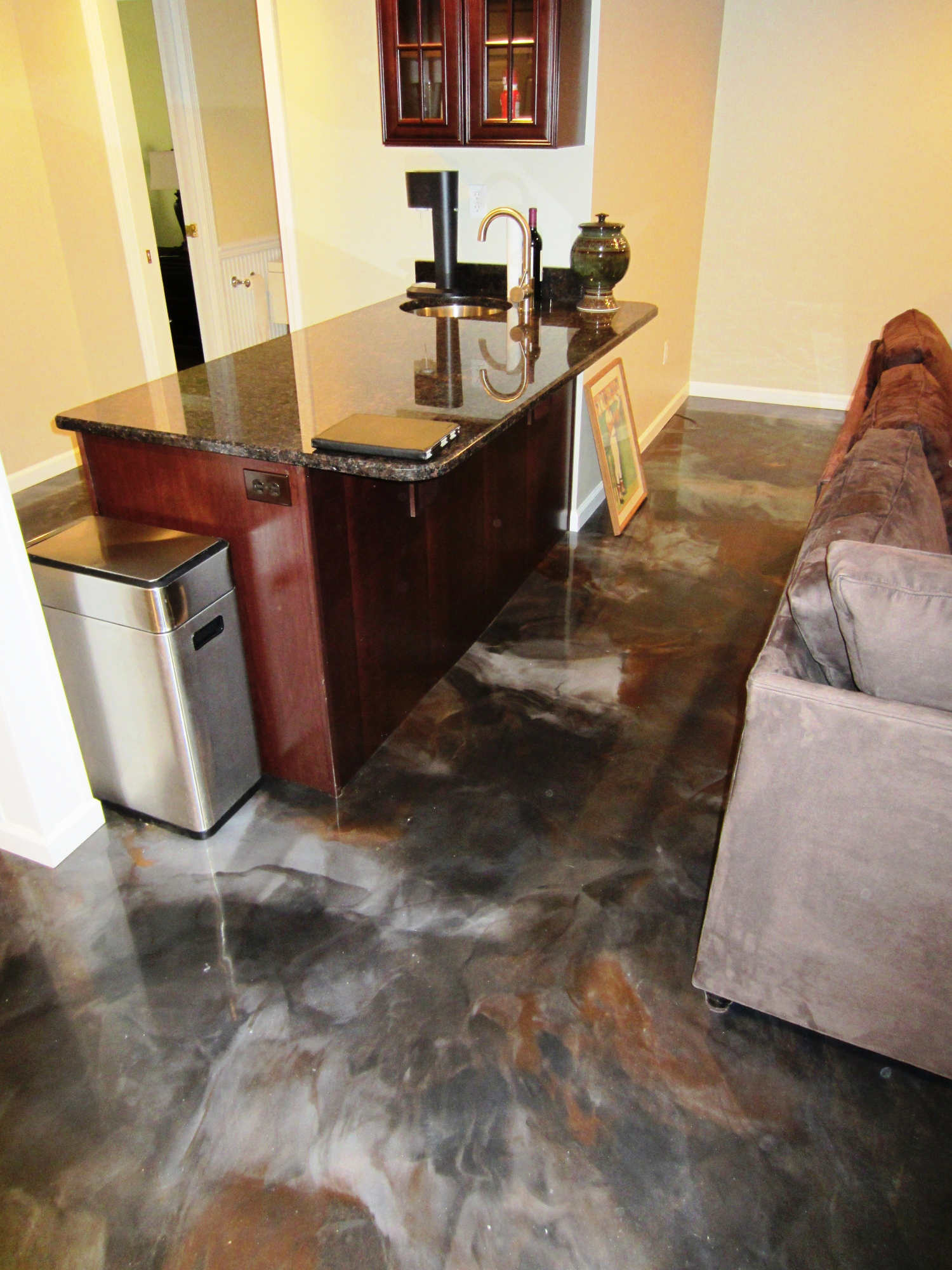
Popular Design Options for Decorative Epoxy Flooring
Decorative epoxy flooring opens the door to a world of design possibilities. From subtle elegance to bold statements, the customization options are virtually limitless. Here’s a look at the most popular design trends.
Metallic Epoxy Floors
Metallic epoxy floors create a shimmering, liquid-metal appearance that is both dramatic and elegant. The swirling patterns mimic natural stone or flowing water, making this design a favorite for high-end residential and commercial spaces.
Marbleized Epoxy
Marbleized epoxy floors replicate the sophisticated look of marble without the high cost or maintenance. This option offers a seamless surface with veining and color gradients that resemble natural stone.
Color Flake Epoxy
Color flakes, or chips, are embedded in the epoxy to add texture and vibrancy. Available in a variety of colors, this design is perfect for creating a playful or modern look, often seen in garages and recreational areas.
Solid Color Epoxy
For those seeking simplicity, solid color epoxy floors provide a clean, uniform appearance. This design is ideal for minimalist interiors or spaces that need a professional and polished look.
3D Epoxy Flooring
3D epoxy designs use images or patterns beneath a clear epoxy layer to create the illusion of depth. Popular choices include ocean waves, geometric patterns, or even custom graphics for a truly personalized touch.
Geometric and Abstract Patterns
Epoxy flooring can be customized with intricate patterns or abstract designs. These are achieved through layering different colors and textures, offering a unique, artistic flair to any room.
Benefits of Choosing Decorative Epoxy for Your Floors
Decorative epoxy flooring offers a host of benefits that make it a standout choice for both functional and aesthetic purposes. Its blend of style, durability, and low maintenance makes it an excellent option for a wide range of settings.
Exceptional Durability
Decorative epoxy floors are built to withstand heavy use, including foot traffic, vehicle movement, and exposure to chemicals. This makes them ideal for high-traffic areas like garages, kitchens, and commercial spaces.
Aesthetic Versatility
The customization options with decorative epoxy flooring are unparalleled. From metallic finishes to vibrant color flakes, this flooring allows for endless creativity to match any design theme.
Seamless and Hygienic Surface
Unlike tile or hardwood, epoxy floors are seamless, eliminating cracks and crevices where dirt and bacteria can accumulate. This makes them a hygienic choice for homes, healthcare facilities, and food preparation areas.
Resistance to Damage
Epoxy flooring is highly resistant to scratches, stains, and impact damage. It also stands up well to spills, including oil, grease, and harsh cleaning chemicals.
Easy Maintenance
With a non-porous surface, decorative epoxy floors are incredibly easy to clean. A quick sweep and mop are usually sufficient to keep the floors looking new, making them a low-maintenance solution.
Cost-Effective Longevity
While the upfront cost may be higher than some flooring options, the durability and minimal maintenance of decorative epoxy make it a cost-effective investment in the long run.
Applications: Where Can You Use Decorative Epoxy Flooring?
Decorative epoxy flooring is versatile enough to suit various settings, from residential homes to commercial and industrial spaces. Its unique blend of beauty and durability ensures it performs well in any environment.
Residential Interiors
Decorative epoxy is increasingly popular in living rooms, kitchens, and basements. Its customizable designs make it a great choice for homeowners looking to elevate their interior spaces.
Garages
The durability and stain resistance of epoxy makes it perfect for garages. Decorative designs such as metallic or color flakes add a stylish touch to this typically utilitarian space.
Commercial Spaces
Retail stores, restaurants, and showrooms benefit from epoxy flooring’s high-gloss finish and ability to handle heavy foot traffic. It adds a professional, polished look to these environments.
Healthcare Facilities
The seamless and hygienic nature of epoxy floors makes them a top choice for hospitals, clinics, and laboratories. These floors are easy to sanitize, meeting strict cleanliness standards.
Industrial Settings
In warehouses and factories, decorative epoxy flooring combines durability with an attractive appearance. It can also be customized to include safety markings or slip-resistant coatings.
Recreational Areas
From gymnasiums to playrooms, decorative epoxy flooring offers a durable, visually appealing solution that can withstand active use.
How to Install Decorative Epoxy Flooring: A Step-by-Step Guide
Installing decorative epoxy flooring is a detailed process that requires preparation, precision, and the right materials. Following a systematic approach ensures a professional-quality finish that is both beautiful and durable.
Gather Necessary Tools and Materials
Before beginning, ensure you have all the required tools and materials. These include:
- Epoxy resin and hardener
- Decorative elements like metallic pigments or color flakes
- Surface grinder or sander
- Cleaning supplies (detergent, vacuum, mop)
- Paint rollers, brushes, and mixing buckets
- Protective gear such as gloves, goggles, and masks
Prepare the Floor Surface
Proper surface preparation is crucial for the epoxy to adhere correctly.
- Clean the floor thoroughly to remove dust, grease, and debris.
- Use a grinder or sander to smooth uneven areas and open up the concrete’s pores.
- Repair cracks or imperfections with a concrete patching compound.
- Vacuum and mop to ensure the floor is completely clean and dry.
Prime the Surface
Priming the floor helps the epoxy adhere better and creates a more uniform finish.
- Mix and apply the primer evenly using a roller.
- Allow it to cure according to the manufacturer’s instructions before moving to the next step.
Apply the Base Coat
The base coat provides the foundation for your decorative epoxy design.
- Mix the epoxy resin and hardener as instructed.
- Pour the mixture onto the floor and spread it evenly using a roller or squeegee.
- Work in sections to ensure even coverage and avoid letting the epoxy dry prematurely.
Add Decorative Elements
This is where creativity comes into play.
- For metallic designs, use special pigments to create swirling patterns.
- For color flakes, sprinkle them evenly across the wet epoxy.
- For 3D designs, embed images or graphics under a clear epoxy layer.
Seal with a Topcoat
The topcoat enhances durability and provides a polished finish.
- Apply a clear topcoat over the decorative layer using a roller.
- Allow the floor to cure completely before using the space, usually 48–72 hours.
Common Mistakes to Avoid with Decorative Epoxy Flooring
While decorative epoxy flooring is a fantastic option, mistakes during installation or maintenance can compromise its appearance and performance. Avoid these common pitfalls to ensure success.
Insufficient Surface Preparation
Skipping or rushing the preparation phase is a frequent mistake. A poorly cleaned or uneven surface will prevent the epoxy from adhering properly, leading to peeling or bubbling.
Incorrect Mixing of Epoxy
The epoxy resin and hardener must be mixed in precise ratios. Deviating from these ratios can result in improper curing, making the surface soft, tacky, or brittle.
Applying in Poor Conditions
Temperature and humidity greatly affect epoxy application. High humidity can cause moisture to interfere with adhesion, while extreme temperatures can lead to uneven curing or discoloration.
Rushing the Curing Process
Using the floor before the epoxy has fully cured is a common mistake. Premature use can damage the surface, leaving permanent marks or weakening its durability.
Uneven Decorative Application
Adding too many or too few decorative elements, or applying them inconsistently, can create an unbalanced appearance. Work methodically to ensure a uniform design.
Overlooking Safety Precautions
Epoxy fumes can be harmful, and direct contact with the material can irritate. Always wear protective gear and ensure proper ventilation during the installation process.
Maintenance Tips to Keep Your Decorative Epoxy Flooring Looking New
Decorative epoxy flooring is relatively low-maintenance, but regular care is essential to preserve its appearance and longevity. Following these maintenance tips will ensure your floors stay as beautiful as the day they were installed.
Sweep Regularly
Dust and debris can dull the floor’s shine over time.
- Use a soft-bristle broom or dust mop to remove particles daily.
- For larger spaces, consider a vacuum with a soft brush attachment.
Clean Spills Promptly
Although epoxy is resistant to stains, cleaning up spills quickly prevents potential discoloration or residue buildup.
- Wipe spills with a soft cloth or mop and a mild detergent solution.
Use Non-Abrasive Cleaners
Harsh chemicals or abrasive scrubbers can damage the epoxy surface.
- Stick to pH-neutral cleaners specifically designed for epoxy flooring.
- Avoid products with ammonia or vinegar, which can dull the finish.
Protect the Floor from Scratches
- Place felt pads or rubber mats under heavy furniture and equipment.
- Avoid dragging sharp or heavy objects across the floor to prevent scratches.
Periodic Recoating
Over time, the topcoat may wear down, especially in high-traffic areas.
- Consider reapplying a clear topcoat every few years to restore the shine and protective layer.
Address Damage Immediately
If you notice chips, cracks, or peeling, address the issue promptly.
- Use an epoxy repair kit to fix minor issues, or consult a professional for larger repairs.
Dur-A-Chip Vinyl Chip Flooring Dur-A-Flex
Related Posts:

